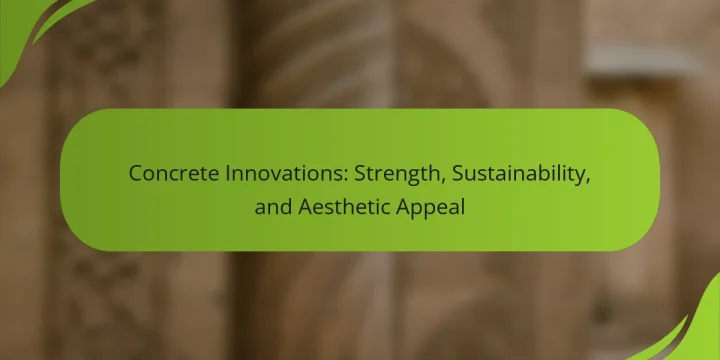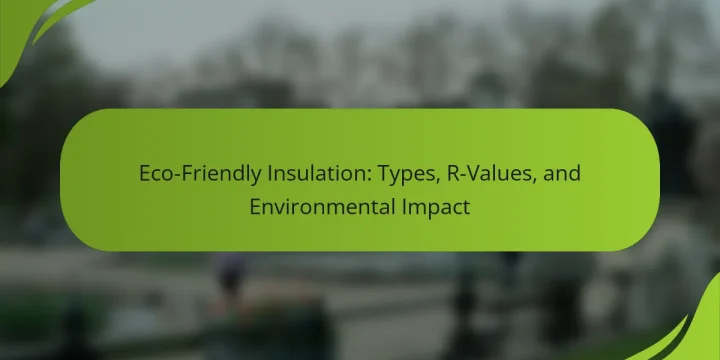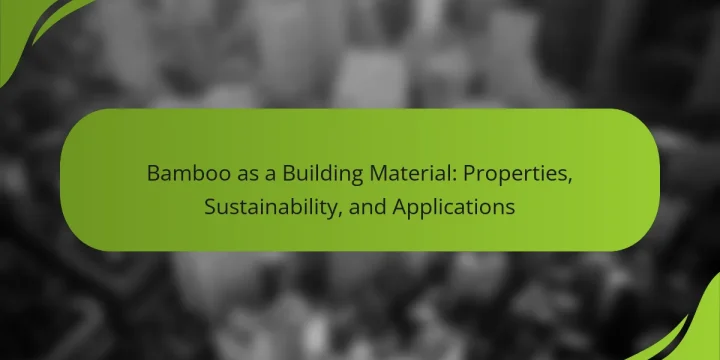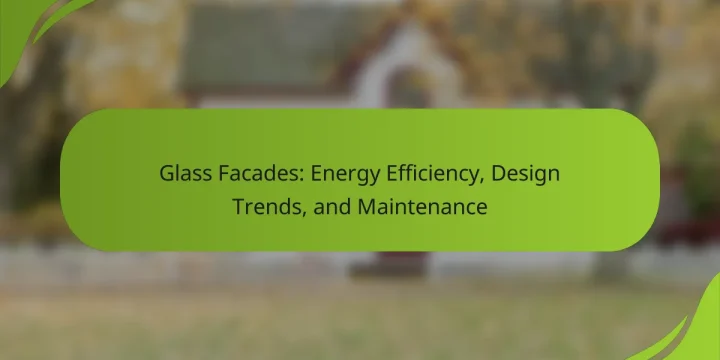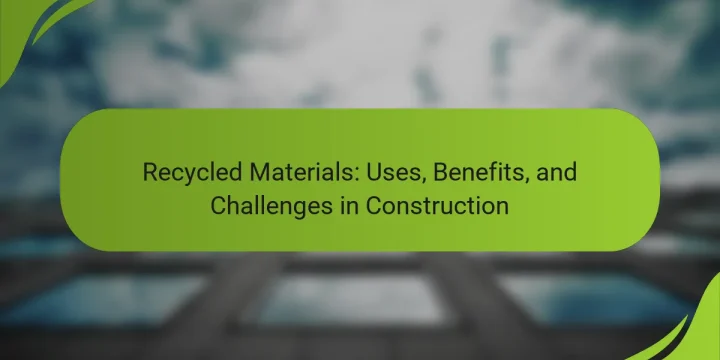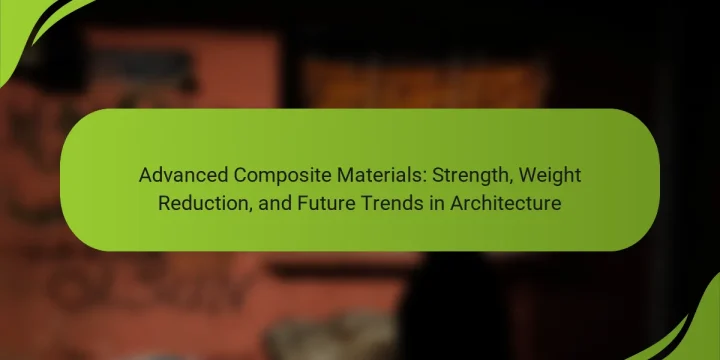
Advanced composite materials are engineered substances created from two or more distinct materials, such as carbon or glass fibers combined with a polymer matrix. These composites offer a high strength-to-weight ratio, making them ideal for applications in aerospace, automotive, and construction industries. Their lightweight nature and superior mechanical properties allow for innovative architectural designs, reducing overall structural load and enhancing energy efficiency. Future trends indicate a shift towards bio-based composites and smart materials, as well as advancements in 3D printing technology, which aim to improve sustainability and accessibility in building solutions. What are Advanced Composite Materials? Advanced composite materials are engineered materials made from two or more constituent materials with significantly different physical or chemical properties. These materials combine the high strength-to-weight ratio of fibers, such as carbon or glass,…

